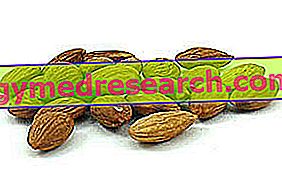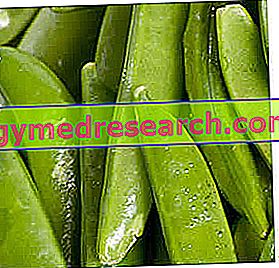Among all the substances belonging to the category of cyanogenic glycosides, amygdalin is undoubtedly the most common and representative. Like the other members of this group, it has the ability to originate hydrocyanic acid when subjected to enzymatic hydrolysis. Amygdalin, in particular, undergoes the action of B-glycosidases, releasing two molecules of glucose, a molecule of benzaldehyde and a molecule of hydrocyanic acid. The enzymes involved in this reaction are not produced directly by the human body, but by the intestinal bacterial flora and by that eventually present in the ingested drug.
Because of its ability to release hydrocyanic acid, amygdalin is responsible for the toxicity of the leaves and seeds of many plants belonging to the Rosaceae family.

As shown in the table, the amygdalin abounds mainly in bitter almonds, but also in the seeds of peaches, apples, plums and cherries. A bitter almond contains about one milligram of hydrocyanic acid. For a child, the simple ingestion of a dozen bitter almonds can therefore be fatal, while for an adult it takes 50-60.
| Plant | mg of hydrocyanic acid per 100 grams of food | glycoside |
|---|---|---|
| Bitter almonds | 250 | Amygdalin |
| Apple (seeds) | 70-75 | Amygdalin |
| Nectarine (hazel) | 20 | Amygdalin |
| Plum (hazel) | 70-75 | Amygdalin |
| Plums (hazel) | 70-75 | Amygdalin |
Amygdalin and tumors
In the field of oncology, amygdalin represents one of the many "buffaloes" perpetrated against consumers. The discovery of the alleged anticancer properties of this cyanogenetic glycoside is attributed to the American doctor Ernest T. Krebs (1920), but it is thanks to the "studies" of the son Ernest T. Krebs Junior, biochemist, that the amygdalin has risen to the headlines. a little of the whole world, so much so as to justify the opening overseas of real clinics dedicated to anticancer therapy with amygdalin.

In the form of laetrile (a molecule very similar to the original one), the substance was the object of marketing and study campaigns that had very little scientific knowledge: small series, general results, publication in third-rate journals, conflicts of interest and so on . To justify the alleged empirical efficacy with scientific evidence, various hypotheses were advanced; denied the ability to selectively release hydrocyanic acid at the level of the tumor cells (rich, according to Krebs, of B-glycosidases and poor of the enzymes necessary to detoxify it), the amygdalin was even renamed vitamin B17, given that the tropical populations that ingested significant quantities of this substance through the diet seemed to suffer less than some cancers. Only a shame that the major American health authorities, along with prestigious oncological institutions, applying the scientific method to the study of the anticancer virtues of amygdalin, have repeatedly underlined the absence of anticancer properties on the experiment animal and on humans, as well as the danger of hydrocyanic acid poisoning in case of long term use or high doses.



